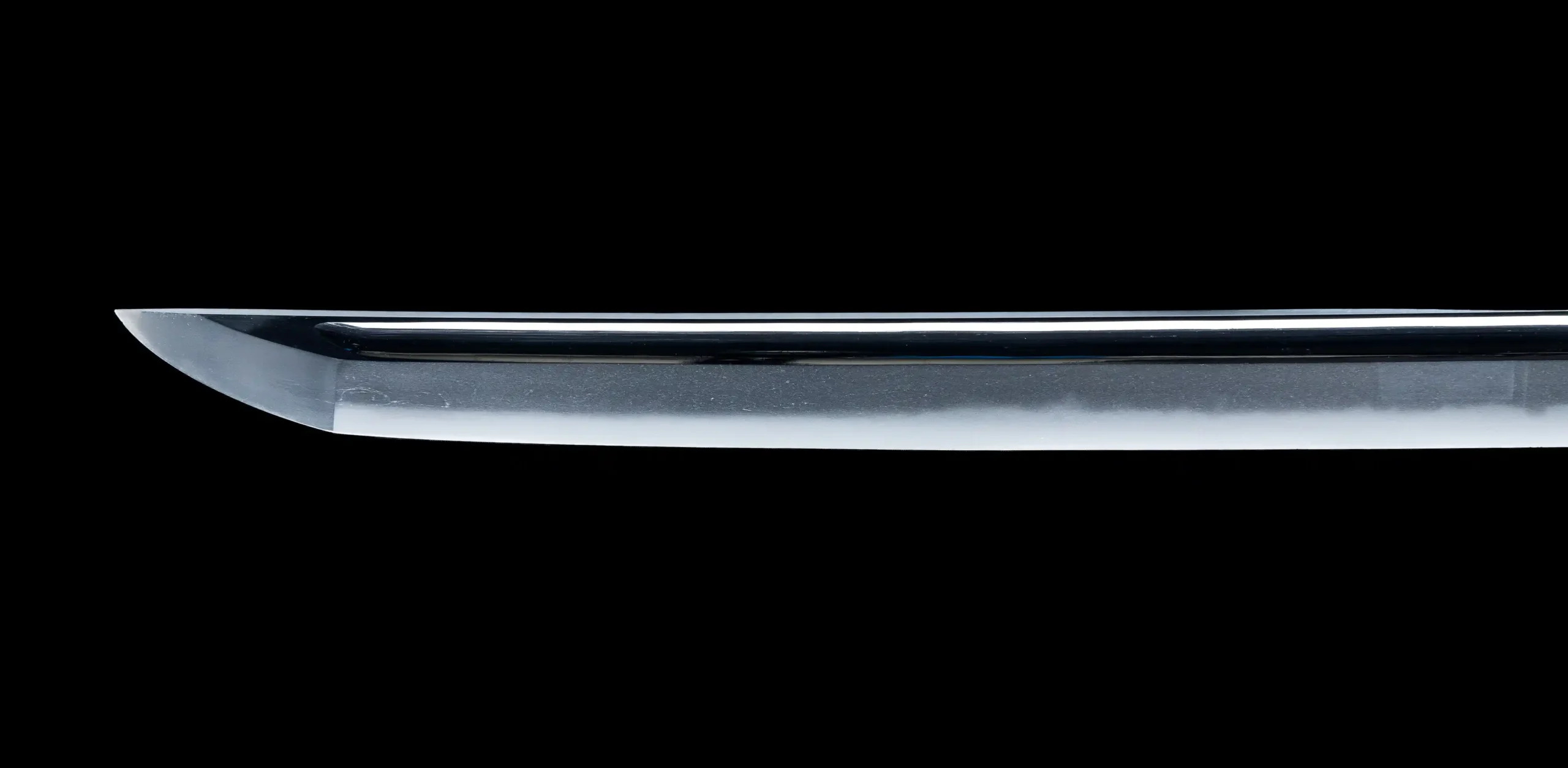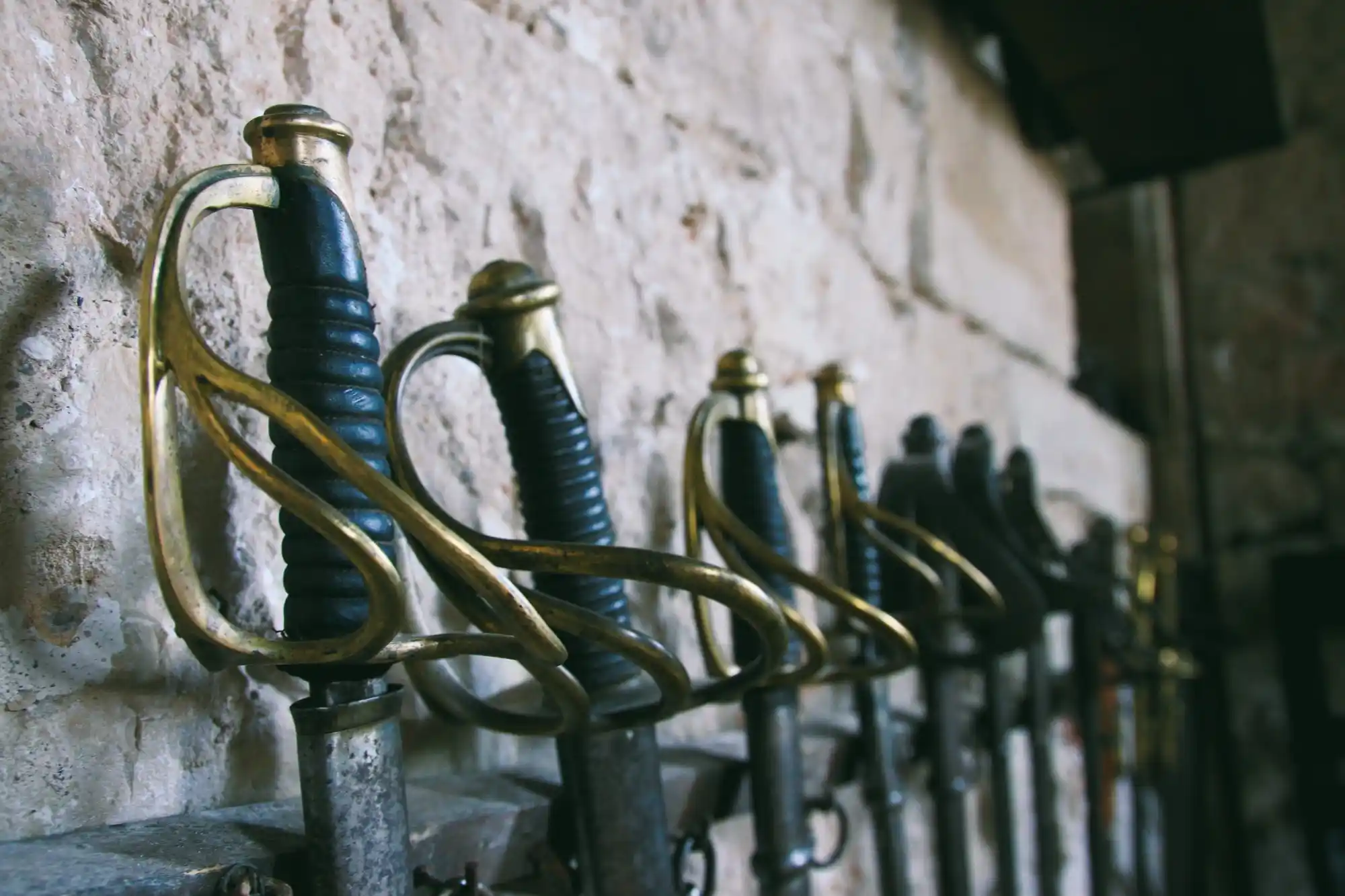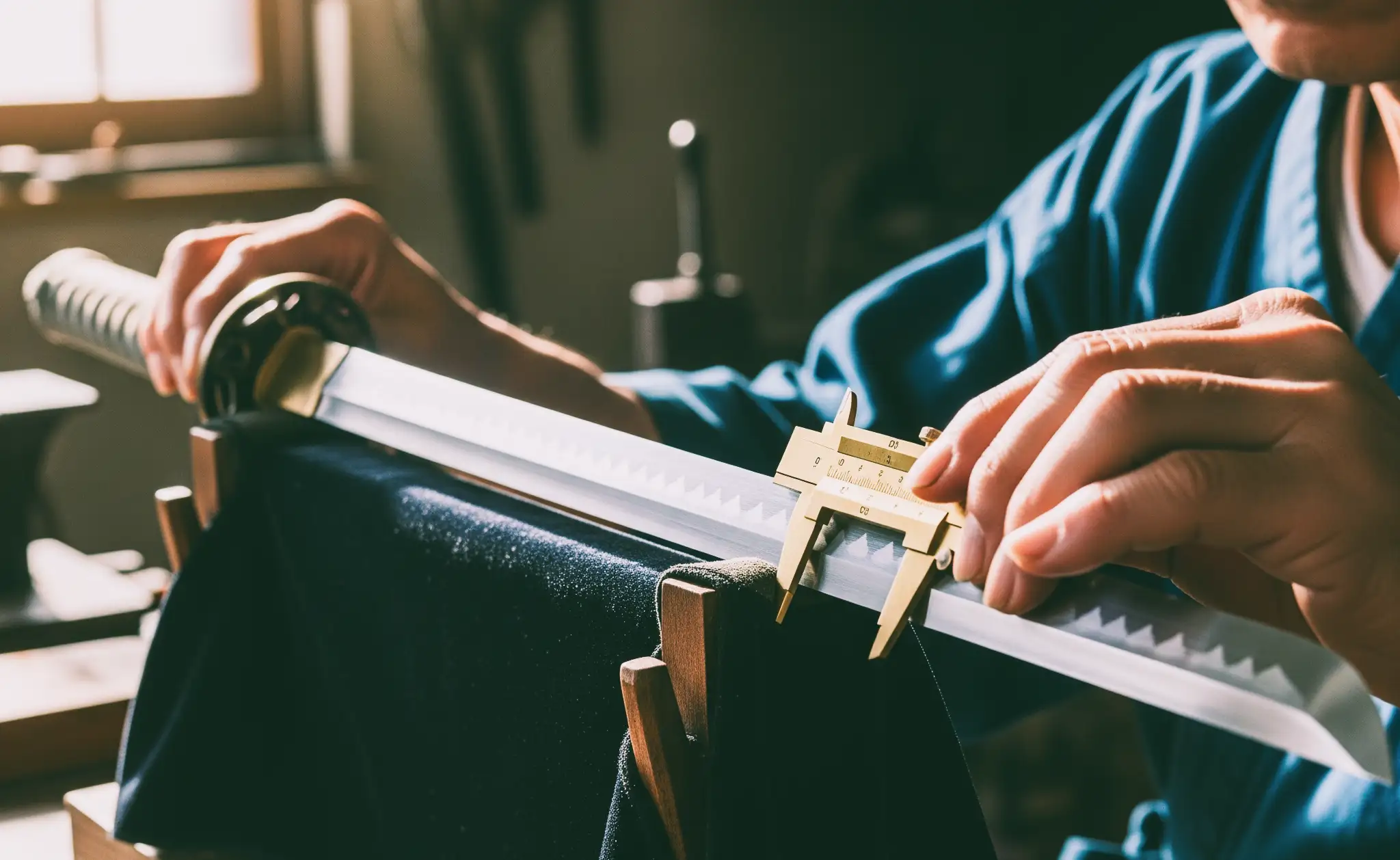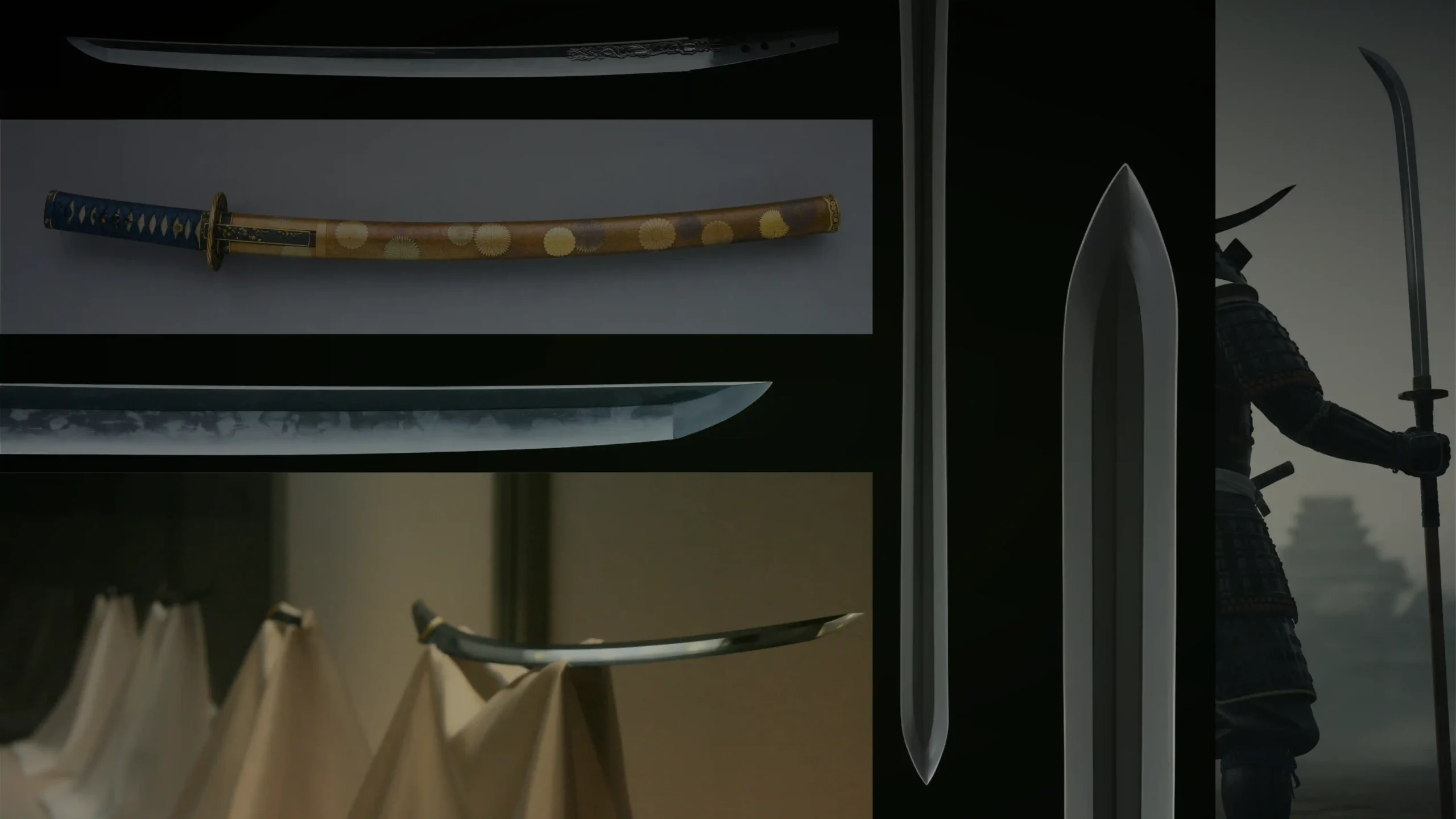We may earn revenue from the products available on this page and participate in affiliate programs. Learn more >
A katana, like any blade, can lose its sharpness over time. Activities like repeated drawing and sheathing, tameshigiri (test cutting), or improper storage all contribute significantly to dulling the blade. So, if you’ve noticed that your katana isn’t as sharp as it used to be, it’s time to take action.
Although it is always better to leave blade sharpening to professionals, doing the work yourself can help you understand your blade better and it can be more cost-effective. With some patience and the right technique, anyone can bring back that razor-sharp edge. In this article, I’ll guide you step-by-step through the process of sharpening your battle-ready katana using best methods.
What Not to Use to Sharpen a Katana

Grinding Wheels
Unless you’re a trained professional, grinding wheels are too aggressive for katana sharpening. They can overheat the blade, warp the metal, and cause irreversible damage to the sword’s tempering.
Metal Files
Metal files are way too coarse for a katana and will scratch and damage the surface of the blade. They are typically used for rough tools, not fine blades like a katana.
Knife Sharpeners
Basic pull-through sharpeners or sharpeners meant for pocket knives are not designed for katanas. These tools often use a fixed angle that doesn’t suit the blade geometry of a katana, and they can unevenly sharpen the edge, ruining its balance.
What to Use Instead
Whetstones: Sharpening Stones
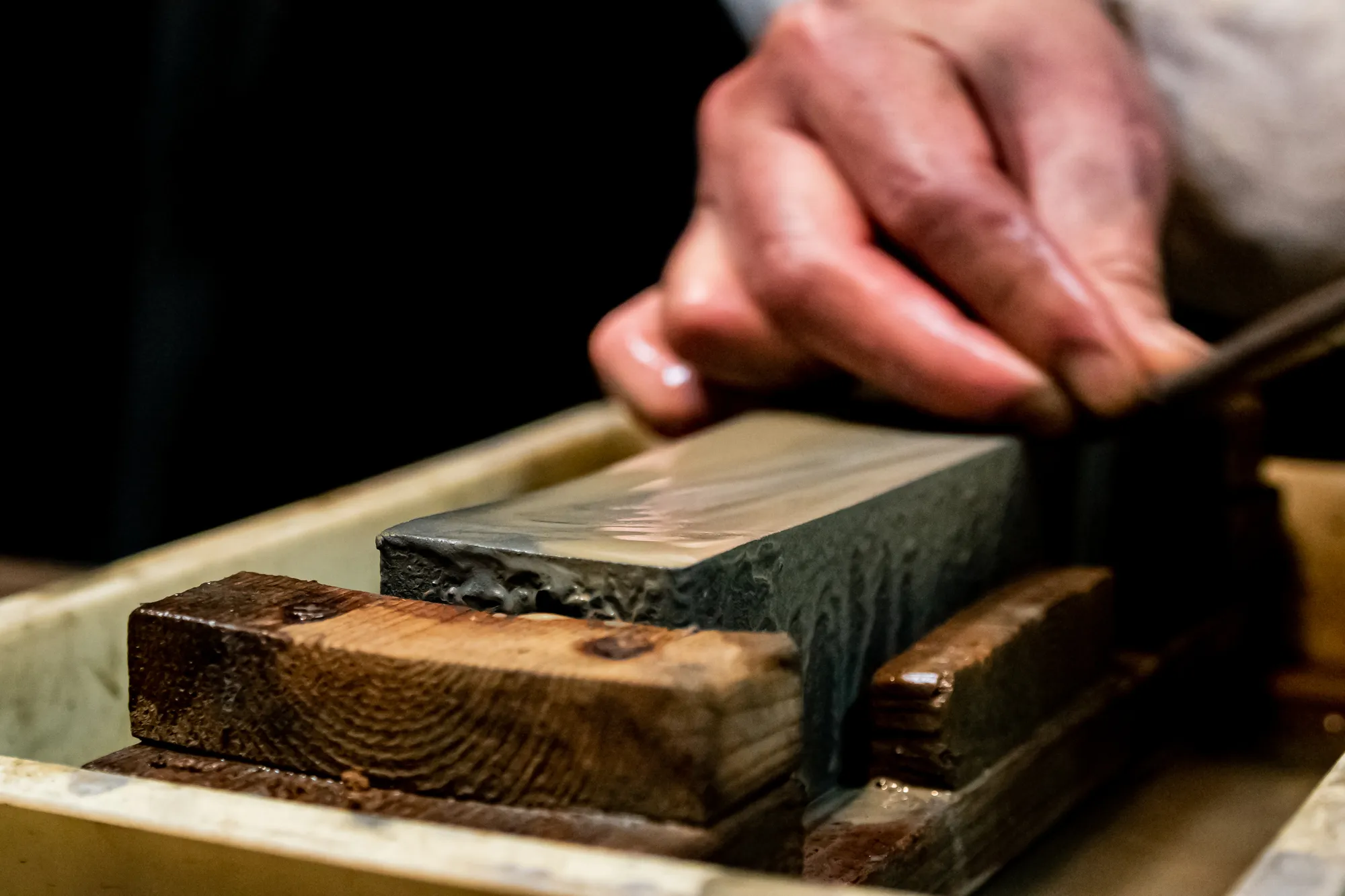
For most people wanting to maintain a Japanese katana at home, the whetstone method is the most practical and effective, allowing careful control over the blade’s sharpness.
This is the traditional method and involves using a combination of different stones with varying grit levels for example: a coarse stone (400-1000 grit) for sharpening dull blades, a medium stone (1000-3000 grit) for refining the edge, and a fine stone (3000-8000 grit) for polishing and achieving a smooth, razor-sharp finish.
If you have a similar set for your knives, you can use those. However, for the best results, you can easily order a full katana sharpening kit.
High-Grit Sandpaper
In the absence of proper sharpening stones, high-grit sandpaper can be used for basic sharpening. Place it on a flat surface and run the blade at a consistent angle. It’s not as precise or long-lasting as stones but can be a quick fix.
How to Sharpen a Katana: Step by Step
Using Sharpening Stones
Begin by securing the whetstone on a stable surface with a non-slip base or damp cloth to keep it from moving. If using water stones, ensure the stone is kept wet throughout the process by periodically adding water. If you’re using an oilstone, apply a thin coat of oil before starting.
When holding the katana, grip the handle firmly with one hand while using your other hand to gently guide the blade. Hold the blade at a consistent 15-degree angle against the stone.
Start at the base of the blade, near the handle, and work your way towards the tip. The motion should be smooth and controlled, moving the blade back and forth across the stone in long, even strokes. Do not apply excessive pressure, instead, let the weight of the blade do the work.
Start with the rough side of the stone, usually 400 or 1000 grit, to sharpen the blade. If you make 5 strokes on one side, do the same on the other. There isn’t a set number of strokes, as it depends on how dull the blade is. Instead of counting, check the sharpness by slicing through a sheet of paper from time to time.
Once you’ve completed the coarse sharpening, move to the finer grit, such as 3000, and later 8000, to refine and polish the edge. Use the same motion and alternate between sides to ensure an even finish.
After sharpening and polishing both sides of the blade, you can follow the same process of cleaning a katana.
Using Grit Sandpaper
To sharpen a katana with sandpaper, the process is similar to using a whetstone. Start by taping the sandpaper to a flat surface like a board to create a stable sharpening base. Use water as a lubricant to reduce friction and keep the sandpaper clean. Begin with 400-grit sandpaper, pulling the blade toward you at a 15-20 degree angle, and avoid back-and-forth motions. Alternate sides after a few strokes.
Once you’ve sharpened the edge, move to 800, 1000, and finally 2000-grit sandpaper to refine and polish the blade. Last, test the sharpness by slicing paper.
Last Words
Although at the beginning of the process, you may find it a bit challenging to master the right technique, with practice, it will become easier. Take your time and be very careful when handling the blade to avoid injury. Always maintain a consistent angle during sharpening.
In the end, once the sharpening process is complete, don’t forget to clean the blade thoroughly and apply oil to prevent rust. Display the katana properly in a safe, dry place to keep in excellent condition for the long term.
FAQ
Can you sharpen your katana?
Yes, you can sharpen your katana at home using proper tools like whetstones or high-grit sandpaper. If you’re unsure, it’s always recommended to consult a professional, especially for valuable or antique katanas.
How much does it cost to get a katana sharpened?
On average, it can range from $30 to $100 for basic sharpening. For more extensive polishing or restoration work, prices can go much higher, often between $100 to $300 or more, especially if done by a skilled sword polisher.
What is the angle for sharpening a katana?
The ideal angle for sharpening a katana is typically around 15 to 20 degrees.
Do katanas dull easily?
Katana can become dull over time if used frequently or improperly, such as cutting inappropriate materials. Regular maintenance, including cleaning, oiling, and occasional sharpening, will help keep the blade sharp and in excellent condition.




